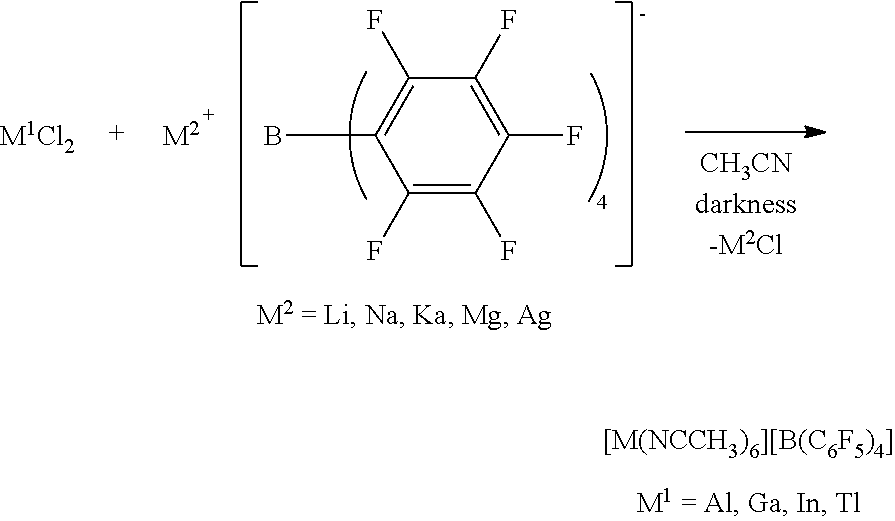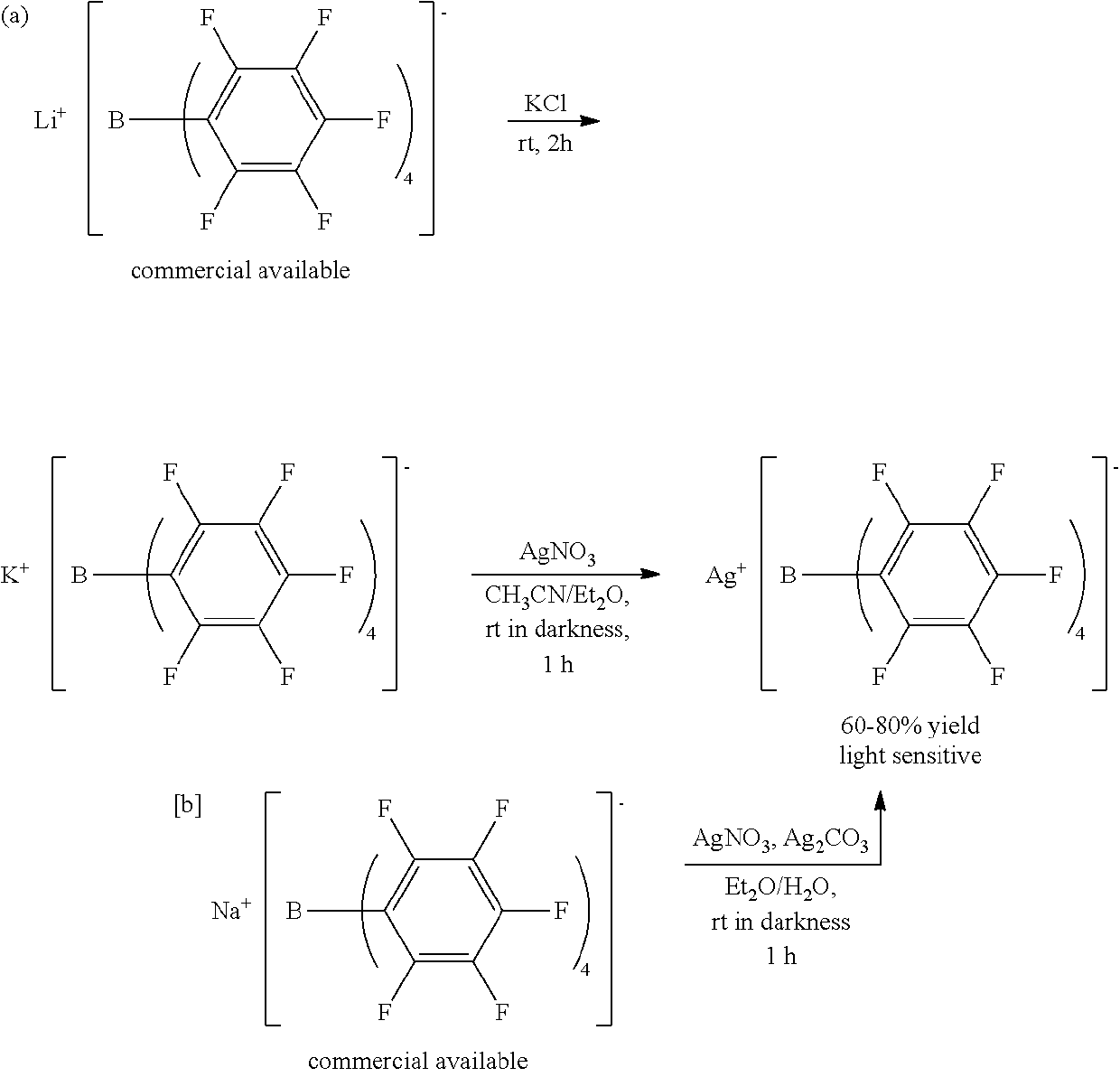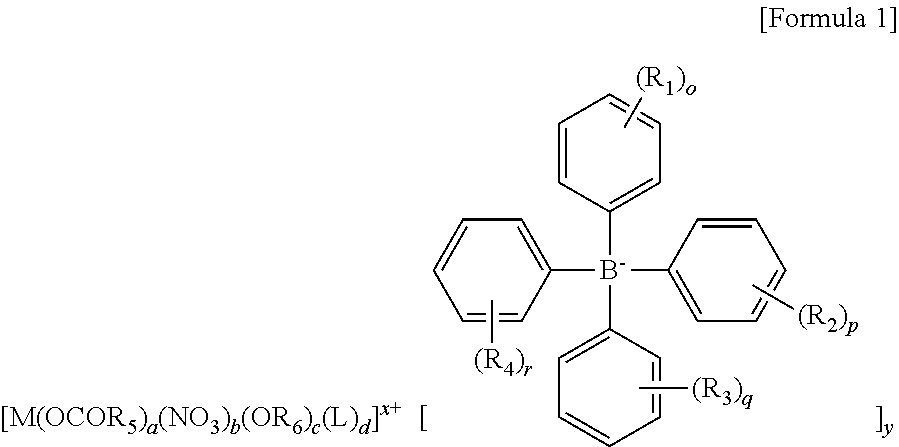Method for Preparing Butene Oligomer
a butene oligomer and oligomer technology, applied in the field of butene oligomer preparation, can solve the problems of degrading product quality, large amount of waste water, and additional washing with water, and achieve the effects of low molecular weight, efficient production of butene oligomers, and low cos
- Summary
- Abstract
- Description
- Claims
- Application Information
AI Technical Summary
Benefits of technology
Problems solved by technology
Method used
Image
Examples
preparation example 1
[0113]
[0114]In a glove box, 100 mg of Al(OH)2(OAc) (purchased from Sigma-Aldrich) was put into a vial together with a magnetic bar, and 2 ml of an acetonitrile solvent was added thereto. To another vial, 3 equivalents of [Et3Si]+[B(C6F5)4](purchased from Asahi Glass Co.) of the metal precursor was put, and 3 ml of an acetonitrile solvent was also added thereto for dissolving. To an Al precursor solution while stirring, [Et3Si]+[B(C6F5)4] dissolved in acetonitrile was slowly added. Then, stirring was performed at room temperature for 5 hours. After removing all solvents in vacuum, washing was performed with benzene and hexane. The remaining material was sufficiently dried in vacuum to obtain a transition metal complex as a powder type.
example 1
[0115]
[0116]An andrew glass pressure reactor from which moisture and oxygen were removed was prepared. 20 g of isobutylene was injected through a line connected with an isobutylene bombe and the andrew glass. A mixture solvent of 20 ml of hexane and 60 ml of dichloromethane (DCM) was used as a solvent after storing in molecular sieve to remove moisture, and was injected after calculating monomer concentration in the reactant (total solution for compound, TSC) from the top of the andrew glass using a syringe. After finishing the injection of the solvent and the monomer, the Andrew glass was moved into a water bath, and the temperature was set to the polymerization temperature of 30° C.
[0117]0.01 wt % of the catalyst of Preparation Example 1 stored at a low temperature in a glove box was weighed based on the total weight of the monomer and dissolved in a DCM solvent. The resultant solution was transported to a pressure syringe and moved out of the glove box. To a reactor, argon was pr...
examples 2 and 3
, and Comparative Examples 1 to 3
[0118]Butene oilgomers of Examples 2 and 3, and Comparative Examples 1 and 2 were prepared by using the catalyst of Preparation Example 1 and changing solvent amount conditions as shown in Table 1 below. In addition, as Comparative Example 3, boron trifluoride diethyl etherate (BF3DEE) of Aldrich Co. was purchased and used.
PUM
| Property | Measurement | Unit |
|---|---|---|
| PDI | aaaaa | aaaaa |
| volume ratio | aaaaa | aaaaa |
| total weight | aaaaa | aaaaa |
Abstract
Description
Claims
Application Information
 Login to View More
Login to View More - R&D
- Intellectual Property
- Life Sciences
- Materials
- Tech Scout
- Unparalleled Data Quality
- Higher Quality Content
- 60% Fewer Hallucinations
Browse by: Latest US Patents, China's latest patents, Technical Efficacy Thesaurus, Application Domain, Technology Topic, Popular Technical Reports.
© 2025 PatSnap. All rights reserved.Legal|Privacy policy|Modern Slavery Act Transparency Statement|Sitemap|About US| Contact US: help@patsnap.com



